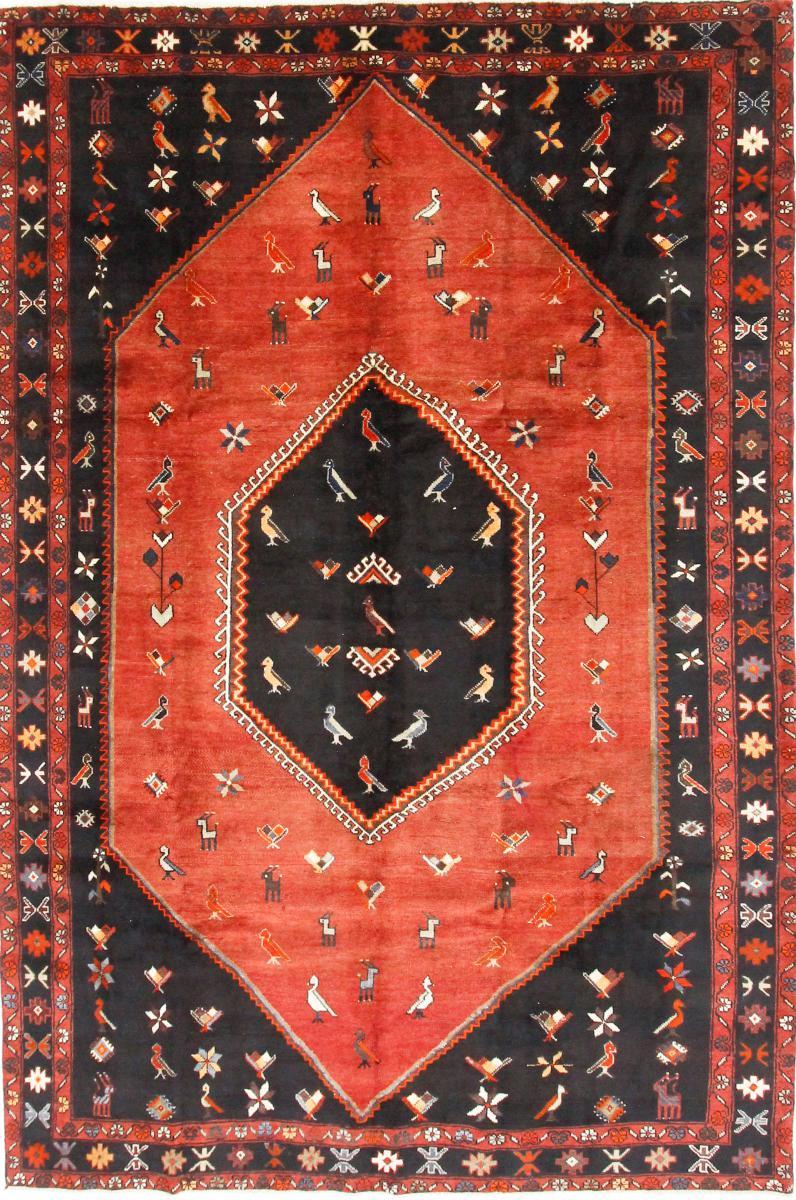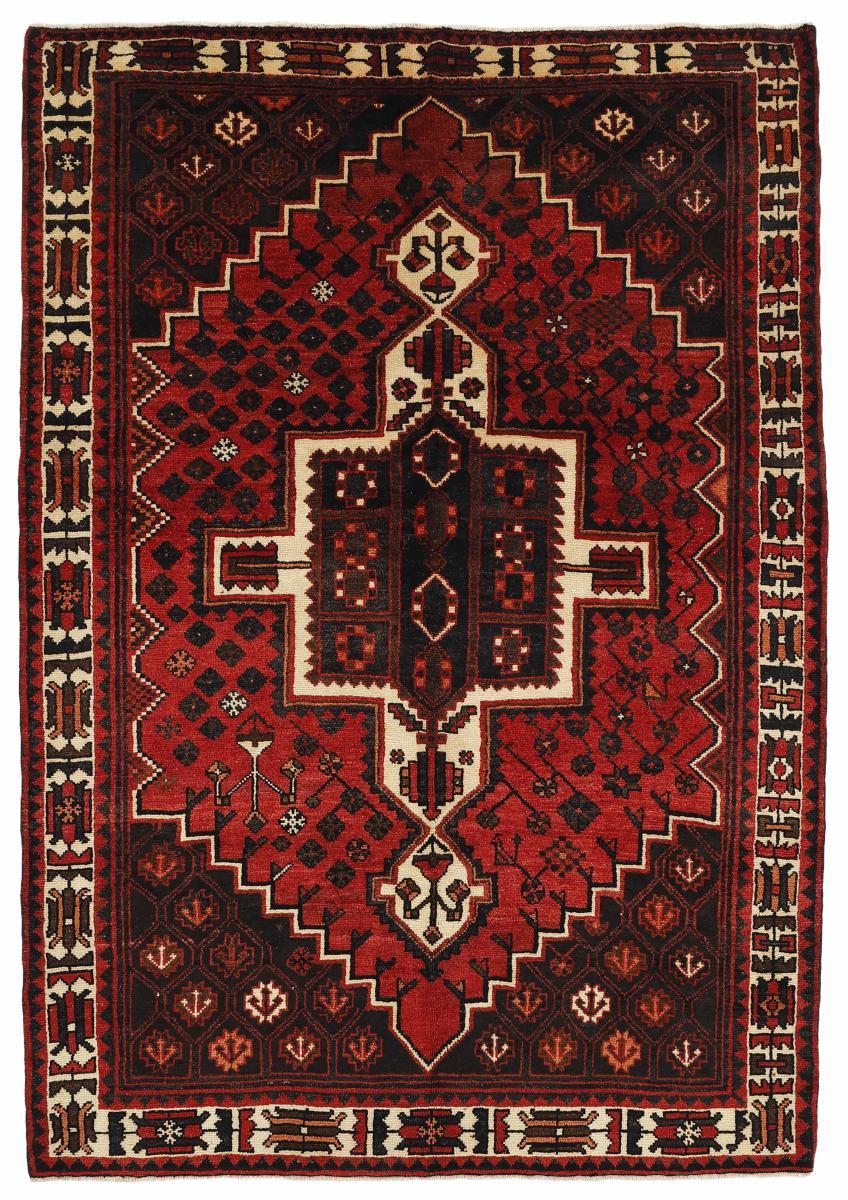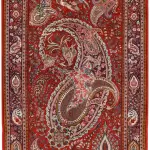Lorestan carpet and its features
Lorestan is considered one of the most historical and cultural cities in Iran. Lorestan carpets can be analyzed in two categories: rural and nomadic. In this article, we are going to introduce Lorestan handwoven carpet and its features.
Background of carpet weaving in Lorestan
In 727 A.H., Ibn Battuta spoke of a small green carpet that was spread for him to sit on during his visit to Izjaj (Izah/Malmir), and Izjaj is a city in the south of Lorestan. In all the books that have been written about Lorestan, there is nothing about this precious carpet, a product that was once a relative advantage for our country. The oldest document that has written about Lorestan handicrafts, especially carpets and felts, in a descriptive manner without referring to the history of "Il Papi Nomads of Western Iran" is the Danish Philberg, who has discussed it a bit in the book.
In 1893, Rawlinson, who presents his evidence of the early conditions, mentions weaving carpets and black tents from goat hair and making horse accessories as women's work. The manifestations of this art can be clearly seen on the patterns carved on the tombstones. A tombstone lying horizontally in the center of the grave or in the second half and above the grave usually identifies the owner of the grave. In addition, sometimes a four-sided or two-sided stone is installed vertically above the grave, which is decorated with interesting scenes of animals and humans. These illustrated and extremely interesting stones, which are unique in the Islamic theme, have been carved and used by nomads.
Nomadic carpets of Lorestan
In the nomadic society, the carpet is woven in such a way that it is finished in a short period of time; Because living in Yilaq and Qashlaq areas and moving at least twice a year between the two limits the expansion of carpet weaving industries. The weaving of nomadic carpets in Lorestan is very limited, and the nomads of Lorestan make thick carpets with the wool of their sheep, and according to their needs, they weave goat hair, gel, and a better type for their horses.
Women and girls of Lorestan, weavers of nomadic carpets
In Lorestan nomadic carpet weaving, all weaving stages are done by nomadic women and girls. From wool picking to halaji and spinning steps with spindle and hand and dyeing is also done by them. The map is not used and it is a wooden carpet weaver that is portable. In the not-so-distant past, the nomads not only provided most of their household needs through handicrafts, but also sold some of them and created side income for the household.
Village rugs and carpets in Lorestan
Villagers are communities that are not part of nomads and have their own customs and traditions. Their main occupation in Lorestan is agriculture and animal husbandry. Of course, the villagers also have a variety of handicrafts according to their needs and economic value, and because their main activity is animal husbandry, handicraft products whose raw material is wool are more popular in these areas. Carpet weaving, rug weaving, felt weaving, mashte weaving are the most and in fact the main production activities of them. Carpet weaving in the villages is mostly non-academic, and single-weave carpets are very popular, and in this type of products, there are mental designs or imitations of other carpet designs used in their homes. But there are also a limited number of original maps that are almost a century old, which are made up of blanket flowers, geometric motifs and angular lines, and are used in woven rural carpets of Lorestan. The rural carpets of this region are mostly khorsk and coarse woven, and in terms of dimensions, carpets are woven in different sizes. The largest dimensions are two agricultural ones that are particularly popular. The colors used in this type of production are dark and uniformly intense. The rural areas that have qualitative and quantitative carpet weaving activities in Lorestan include: villages around Aliguderz, Borujerd, Khorram Abad, Al Shatar, Nur Abad, Drood and Poldakhter. In general, carpet weaving has a better condition in the northern villages of Lorestan province in terms of quantity and quality.
Technical characteristics of Lorestan handwoven carpets
carpet weaving
There are two types of carpet weaving in the nomadic areas of Lorestan. One is horizontal and the other is vertical. In terms of appearance, both types are similar, but they also have differences. In Lorestan, they mainly weave black tents made of goat's hair with a horizontal loom, and they use exactly the same method of weaving as covering the edge of chit, horsehair, khurjins, bags, rugs, or flat weaves. But carpets and knotted rugs are woven with a vertical loom.
Other carpet weaving tools
Other work tools used in carpet weaving are: comb, knife, carpet hook, wefting skewer.
Comb, Dafe, Daftin or Karkit, which has local names and different types, is a tool that is used to beat the carpet fabric. In this way, after weaving a row, it is used to tie knots and lay down thin and thick fabrics. This tool has comb-like ribs and a wooden or metal handle, and as mentioned, it has different types and also has different sizes, and carpet weavers of each region of carpet weaving use a specific type of it based on production and weaving methods.

Technical characteristics of weaving in Lorestan carpet
The characteristics of Lorestan carpet can be examined from two perspectives: one in terms of examining its designs and motifs and the other in the type of coloring and the technical skill of their weaving.
Design and color in Lorestan carpet
The carpet weaving industry in Lorestan province can be geographically divided into mountainous and semi-mountainous categories. This will express the deep relationship between the products and the nature around them. Semi-mountainous areas, which mostly include urban areas, the designs are round and geometric and mostly weave from the map. In the mountainous areas, carpets with geometric designs and angular and broken lines are made in different shapes, which is more visible in the nomads and villagers of the above areas. Also, in terms of color, they have sharp and contrasting colors, and in general, they are desirable carpets that suit the needs of life. It is woven daily.
The type of knot in Lorestan carpet
Both symmetrical and asymmetrical knots are used in the carpets of these regions. Symmetrical knot is more common in nomads and villagers and cities other than Aliguderz, and recently it has also spread in Aliguderz and more people prefer to use symmetrical knot. In general, rugs with this type of knot are stronger in terms of texture than asymmetrical knots. The type of comb or daftin used in these areas are heavy.
Index and dimensions in Lorestan carpets
In terms of index, the carpets woven in Lorestan and mostly produced in its rural and urban areas have a normal index between 32 and 40, except in the case of non-natives from cities like Kashan and Isfahan, etc., who previously had this art. or they have developed this work in the workshops that have been established in recent years after receiving basic approvals, and sometimes they weave up to 70. The pile used in ninety percent of the woven carpets of the province in urban and rural areas is wool, and the threads are definitely made of cotton yarn, but in the nomadic carpets and in fact, the original local designs and weaves, the wool used was hand spun. And it is dyed by the residents themselves, and two wefts and one more weft are woven, and their dimensions are 150x250 and 165x300 cm. Carpets with dimensions of 6 meters and above are woven only in Aligudarz and Borujerd areas and sometimes in Khorramabad, and other areas only deal with carpet weaving in different dimensions. In general, by seeing a nomadic and sometimes rural woven carpet from the Lorestan region, one can feel the features of the color, pattern, texture, dimensions, and texture in it, and even see their difference with the neighboring regions of the province.
Carpet fiber dyeing in Lorestan
In the past, natural dyes were used to dye wool in Lorestan, which were collected entirely from plants or trees in the region. For example, for the yellow color, a plant called Gino was used, which was found abundantly in the place. Interestingly, they used cow's urine and a plant called ganal to fix the colors, and for the black color, they prepared gum from the arjang or arjan tree, which was known as mercury. They boiled mercury and thread together and then put the same wool inside the black flower and waited for three days for the wool to absorb the black color. After three days, the thread was removed from the mud and dried, and then it was washed, and in this way, the black thread was ready with excellent and constant color fixation.
Natural dyes in Lorestan carpets
Wool threads are soaked in buttermilk to prepare for dyeing. Lacquer color was obtained from the red seed insect (coconut cacti). This insect was collected almost daily up to one kilogram in the months of May and June. Ronas was prepared from the root of the plant (Rubia tinctorum) from which the bell red color is obtained. The saffron or yellow color was obtained from the stigma of the saffron plant (Crocus site mos) or pomegranate skin. They make green dye from the fruits of Iranian grapes or mulberries (Rhamnos utilis) and chlorophorus. In this, the human attention is drawn to the bright and very beautiful and attractive green color, which is especially used in the woven carpets of the first half of the 20th century in Lorestan.
Designs and patterns in Lorestan carpets
In the past, the carpets that were woven in Lorestan, because most of them were among nomads, the designs were mostly subjective. In this way, the weaver imagines a pattern like a sparrow in his mind and then weaves it on the carpet. Either they weave a carpet with the same design or close to it, or a combination of several designs from the design of the carpets left over from their past. But today, designs are woven in the form of maps that include chess houses. In all kinds of paper maps in Lorestan, materials such as wood and fabric are used for better protection and optimal use, paper maps are glued on wood or fabric. Other maps that are available to the weavers in paper form are colored on a black and white copy of the original map or a computerized map. The use of these types of maps are usually more popular in the city; But maps that are pasted on wood or cardboard are also very common among villagers. But about how to prepare maps that are pasted on wood, it should be said how to stick a paper map on wood by using the head. In this way, with special divisions, the chess paper on which the map is designed and painted is separated with scissors, then they stick it on the plywood boards with glue.
The most famous designs in Lorestan carpets
Melichei claw design (sparrow)
The motifs in this design are in the form of rhombuses, which are connected to each other by diamond flowers and lotuses of different sizes and dimensions, and sparrows and eagles are placed inside these rhombuses. More skill can be seen in both the weaving and dyeing of this type of carpet.
Mosaic designs
Some of the designs in Lorestan carpets are designed in the form of mosaics in such a way that the text of the carpet is divided into hexagonal or polygonal shapes and inside each of these geometric houses alternately a pattern of single flowers, flower branches, lotuses and decorative elements to fill the space. and other elements of their interest are found.
Herati plan
This motif has been used by weavers since the end of the Timurid period (9th century AH) and throughout the Safavid period, and since it became popular in the Timurid period and in Herat, it is called Herati or Mahi Dirham. The motif in the basis is the image of a flower in different types, with a symbol of a fish in the form of a leaf or a fish or a chicken itself, in numbers of two or four, surrounding the flower. The leaves are the symbol of the seal and the flower in the middle is the symbol of his birth. In the carpet map of this region, there are designs such as Alamdar Chahar Bereh, Taj Mahi, Sheikh Ghorbani design, which, by tracing their roots, can be traced back to the Herat motifs.
Design of four lambs and Alamdar
The types of four-lamb or Charoeh and Alamdar carpets woven around Borujerd are among the old varieties of this province. In Alamdar Chaharbare carpets, large motifs such as lotus flower and congress leaf are used in the text. In these carpets, a pattern like a fish can be recognized. A dark burgundy color is chosen as the background color, and by choosing lighter colors, an attempt is made to compensate for the heaviness of the burgundy color of the text.
Sheikh Ghorbani plan
The name of this design is most likely derived from the name of its weaver. Sheikh Ghorbani project is also included in the category of Herati projects. In the design of Sheikh Ghorbani, the figure of a man has replaced the figure of a fish. This design is in the form of four fish, with the special motif of Sheikh Ghorbani replacing the fish design. In addition to the floral pattern of Sheikh Ghorbani, there are also human-shaped leaves. In this design, there is no tang and only four laches created with zigzag lines are seen. The vermilion color is the color used in the text, and other colors such as lacquered red, green, yellow, orange, light blue, garlic, etc. are distributed in the carpet according to the taste of the weaver. This design is woven in Ashtrinan section of Borujerd city. Ashtrinan is one of the most prosperous carpet weaving centers in Lorestan.
Conclusion
Lorestan is one of the regions of Iran that has a rich history in the field of handwoven carpet production. The handwovens of this region have original and unique patterns that are often unmatched elsewhere. The most common color in the carpets of this region is navy blue, which the Lorestan weaver tries to harmonize and balance with brighter colors and create a beautiful and eye-catching effect.
You can inquire about Buying Handwoven Carpets , Buying Handwoven Kilim and Mats , and Buying Handwoven Pictorial Rug Tableaus online from the Hoveida Carpet Store and register all your orders and Wherever you are in the world, deliver it to the desired address in less than 4 working days.
If you are interested in reading other articles in the field of Handwoven carpets or Handwoven Pictorial Rug Tableaus , please refer to Hoveida Carpet Commercial .
Leave a comment
Your email address will not be published. Required fields are marked *












